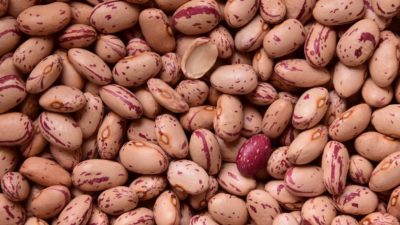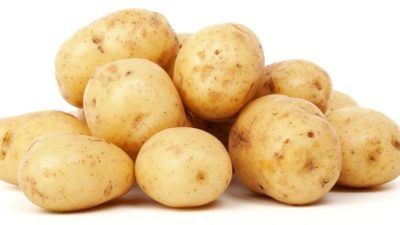Lentils

Lentils are some of the most nutritious and versatile foods in the world and have been a staple in the human diet for millennia.
According to historical records, lentils were the first cultivated pulses and were used as far back as 8,000 BC, possibly even longer. Ancient Egyptians, Romans and Hebrews all ate them and the Indian word dhal (name of a popular lentil dish) actually means lentils. They come in a variety of shapes and colours and all offer a substantial nutrient bundle.
Lentils rule
Whether red, brown, green, black or yellow, lentils are great sources of protein, complex (healthy) carbohydrates (including fibre), vitamins and minerals. They offer an excellent nutrition package and that’s why they’re a part of most traditional cuisines across the world.
One cup of cooked lentils contains on average:
- 18 grams of protein
- 12 grams of fibre
- a good dose of all B vitamins (except B12) – especially rich in folate
- a small dose of vitamins C, E and K
- 40 milligrams of calcium (recommended daily intake is 700 mg)
- 7 milligrams of iron (recommended daily intake is 7.5-15 mg)
- 2.5 milligrams of zinc (recommended daily intake is 15 mg)
- a substantial amount of health-protective antioxidants
- only one gram of fat
Thanks to their protein and complex carbohydrates, lentils help stabilise blood sugar and are therefore great at preventing and managing type 2 diabetes.
They also contain natural phenolic compounds and carotenoids that are responsible for their colour but are also powerful antioxidants and have anti-inflammatory properties. Brown, black and red colours mean significantly more of these than pale-coloured lentils, such as yellow. These pigments and their health-protective properties have been linked to a lower risk of cardiovascular disease, type 2 diabetes and even cancer.
Which lentils for what dishes
There are many types of lentils and although they share the same nutrient content – with either more or less antioxidants – their shape and size makes each one suitable for different dishes.
- Brown lentils: mild, earthy flavour, well complemented by bay leaves in stews, soups or casseroles and are also great as a mince replacement.
- Green lentils: similar to brown lentils but with a slightly more peppery flavour. Ideal for salads or stews, they come in a variety of sizes and are a cheaper alternative to Puy lentils.
- Yellow and red lentils: sweeter taste and nutty flavour, the only two types that are split and therefore cook quickly. Excellent for Indian and Middle eastern dishes and soups.
- Beluga lentils: tiny black lentils with a strong, earthy flavour, great for warm salads, casseroles and nutroasts.
- Puy lentils: ultra-dark green lentils grown in the volcanic soil of the French region called Le Puy, rich, peppery taste, perfect for salads, stews and casseroles
Cook them well
Lentils should always be consumed well-cooked as when raw or undercooked they can cause serious health problems, food poisoning and, in very extreme cases, even death. It’s all because they contain natural compounds called lectins which are toxic but fortunately, cooking destroys them!
There’s a theory that lectins evolved as a defence mechanism. Animals are able to smell lectins so they avoid plants that contain them. By discovering cooking, humans outsmarted plant evolution and unlocked the world of pulses!
Cooking doesn’t destroy all lectins but it reduces the content to a minimum and that’s enough to make your lentils completely safe to eat. Should you try to eat raw or very undercooked lentils, your body will react with a prompt, self-preserving reaction – getting rid of everything in your digestive tract as fast as possible!
Sprouting
Sprouting decreases the lectin content in lentils and the longer the duration of sprouting, the more lectins are deactivated. Sprouted lentils can be a part of a healthy diet but be sure to sprout them for at least two or three days or they may make you sick!
Cooking tips
Red, orange and yellow lentils – the split varieties – take a relatively short time to cook, only 15 to 20 minutes. With the other varieties, it’s best to soak them for several hours beforehand. You can also cook them in big batches and freeze what you don’t use or buy tinned lentils – their nutritional value is very similar.
When cooking lentils, don’t add salt or acidic ingredients such as tomatoes or lemon juice because that immediately hardens them and considerably increases the cooking time. It’s best to add these ingredients towards the end of cooking when the lentils have already softened.
Happy guts
Lentils are less likely to make you bloated than beans but some people still experience flatulence issues. The more often you eat lentils, the less likely you are to be bloated because your gut bacteria adapt and help to digest them better. However, there are a few handy tricks – add a large strip of the kombu seaweed to lentils when soaking and cooking, then remove it and drain them. Some ingredients can also play an important part – adding ginger, fennel and cumin or caraway seeds helps to reduce bloating and so does herbal tea with fennel, mint and aniseed.
Versatile lentils
We tend to use lentils in more traditional dishes but you can easily add them to a variety of meals, particularly if you want to increase your protein intake. Blend them into thick, creamy sauces or dips; add them to just about any soup, casserole or salad; roast them (boiled) with spices for a tasty topping to savoury dishes; blend or mash them and use in sweet baking; or use them as a replacement for meat in many ‘meaty’ recipes.






